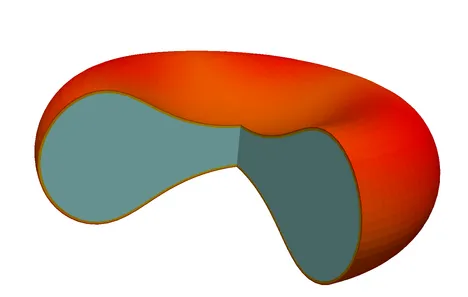Biomedical: Cellular Modeling
The human Red Blood Cell
Red blood cells (RBC, erythrocytes) are nucleus-free cells that can be sketched as a liquid capsule enclosed by a biological membrane. The great scientific interest in RBC is explained in the fact that they dominate the rheological behavior of blood and their rupture is the limiting factor in long-term application of artificial organs. The focus of this research topic thus lies on the development of a comprehensive numerical model of RBC.
The two-layered continuum based model we have developed accounts for the characteristics of the lipid-bilayer and the cytoskeleton separately. The coupling of the membrane to the interior cytosol as well as to the surrounding blood plasma is realized by a monolithic fluid-structure interaction approach. As first continuum model this model therefore includes viscosity and incompressibility of cytosol and blood plasma, viscosity, bending resistance, incompressibility and resisitance against area dilatation of the lipid bilayer and shear elasticity of the cytoskeleton.
With one set of realistic parameters the model is able to accurately match different quasi-static and dynamic experimental results.
